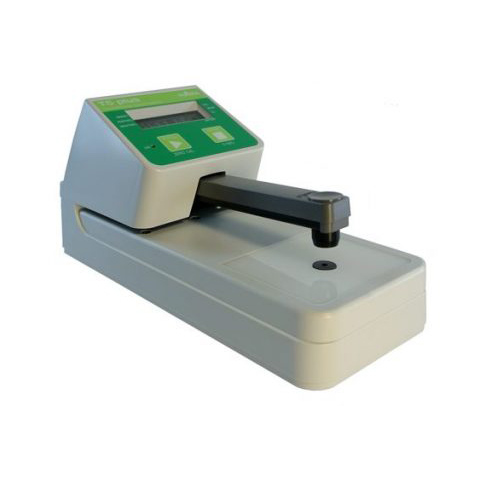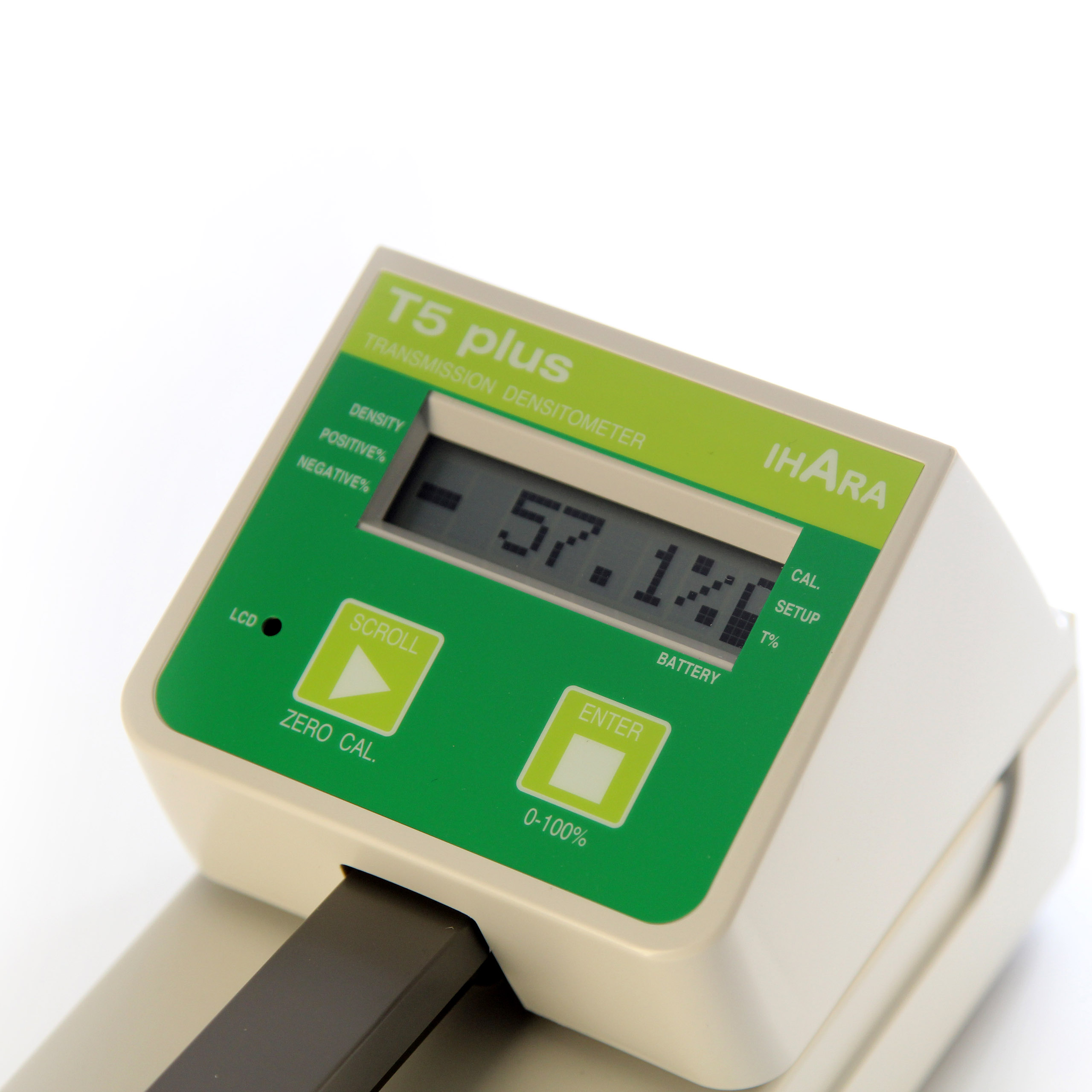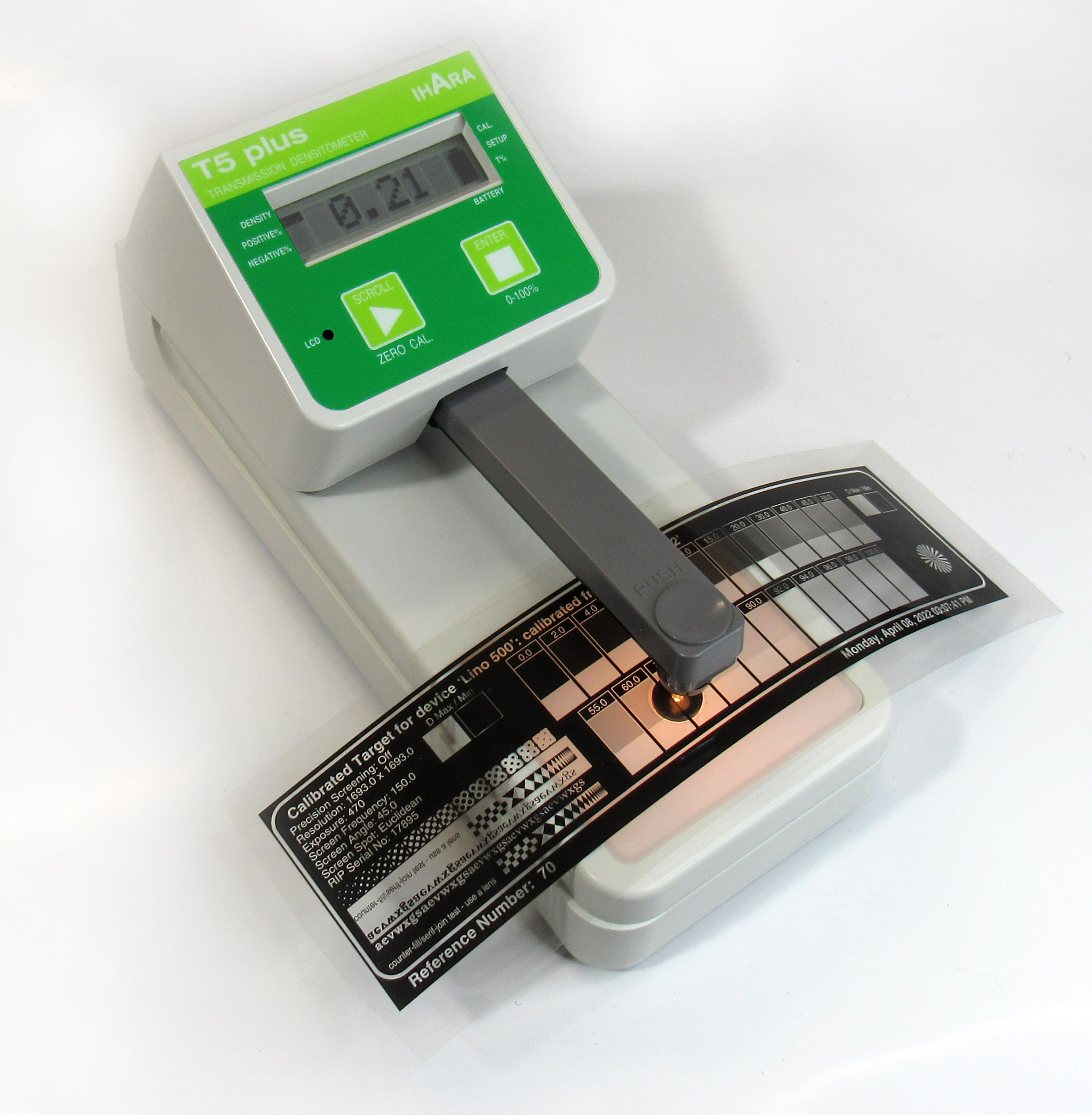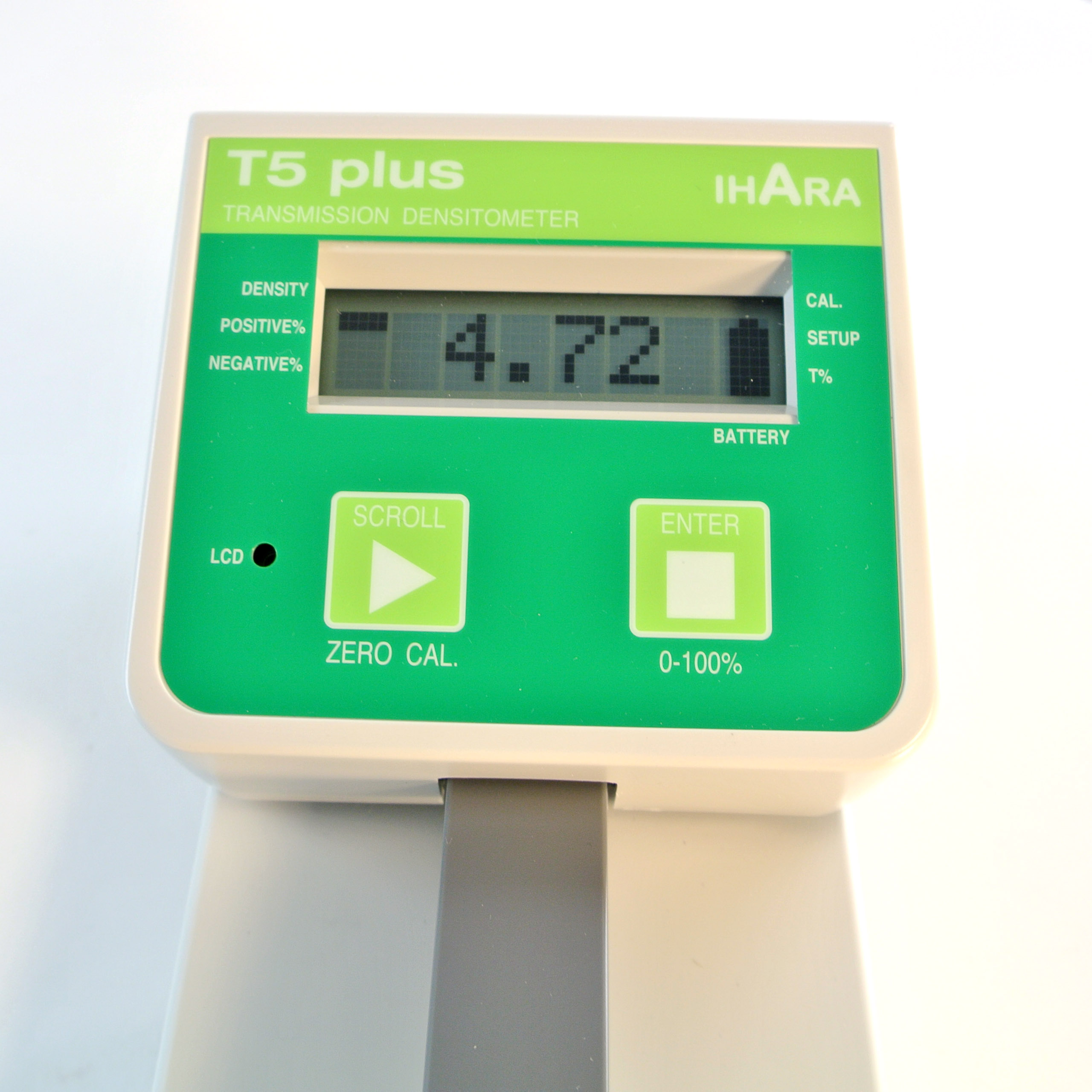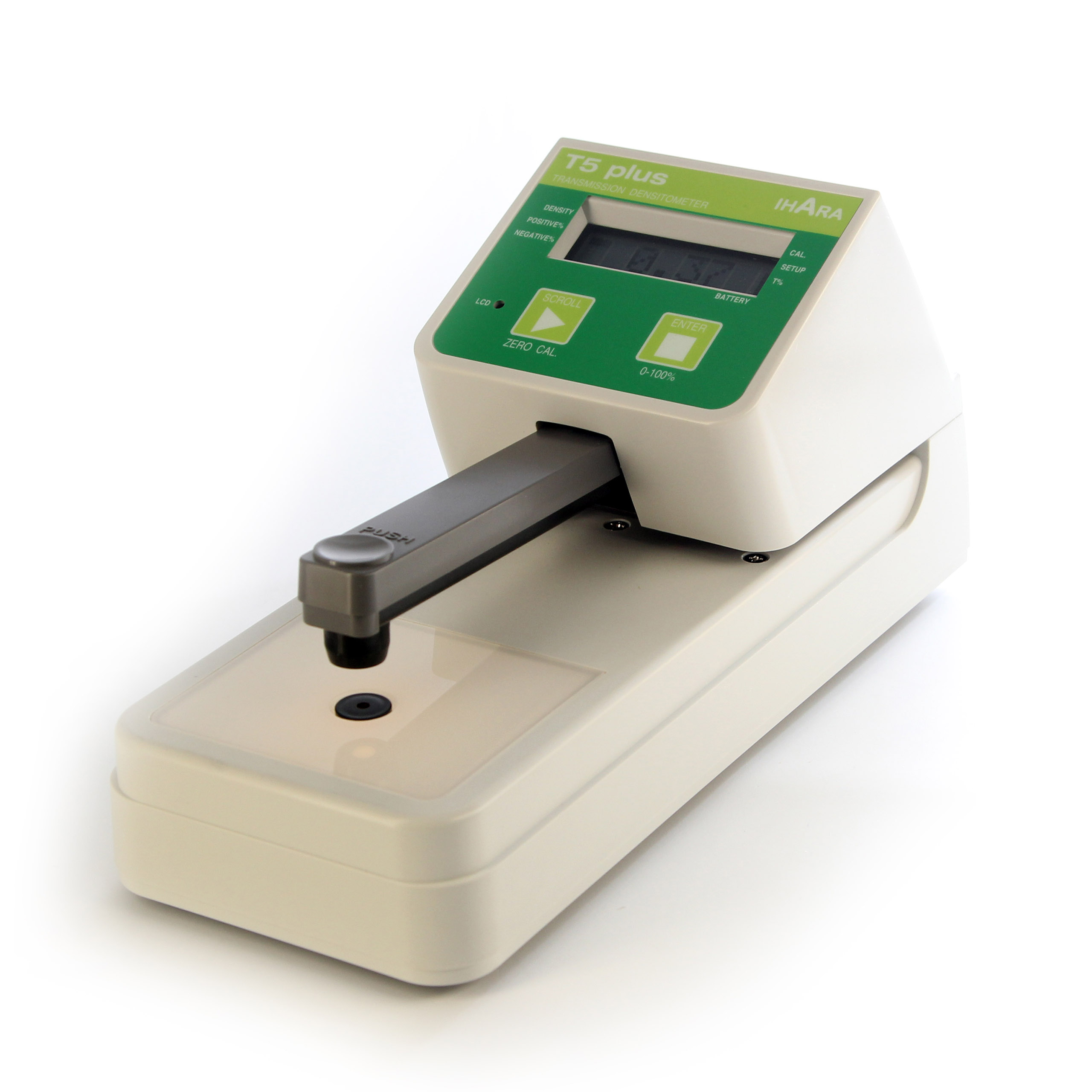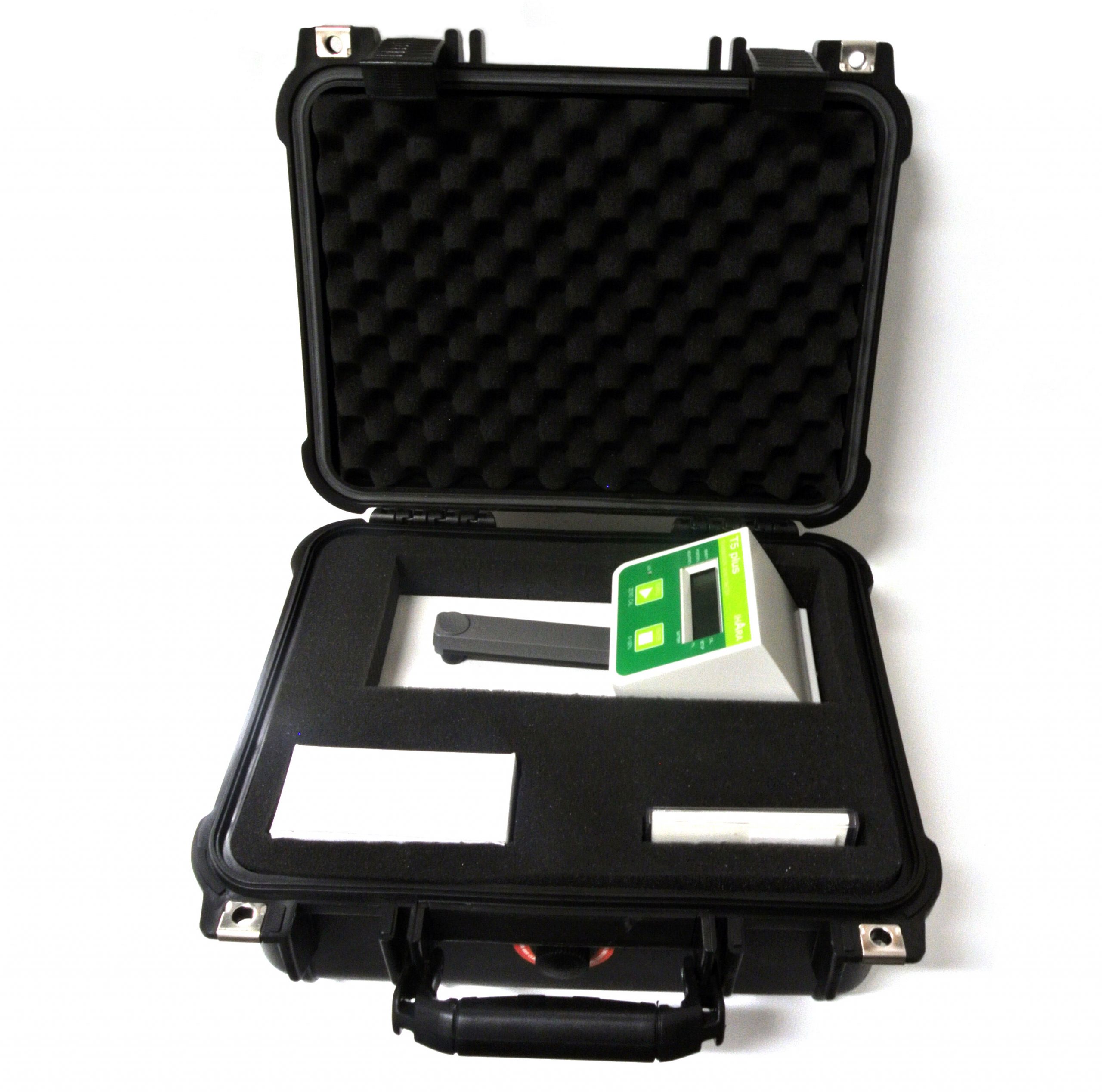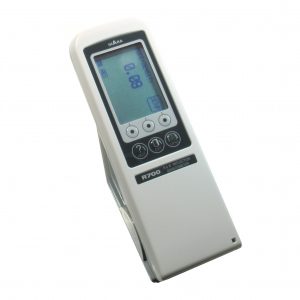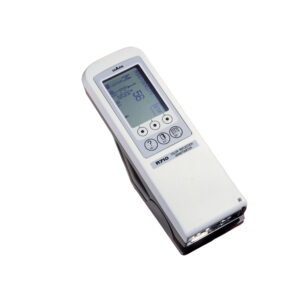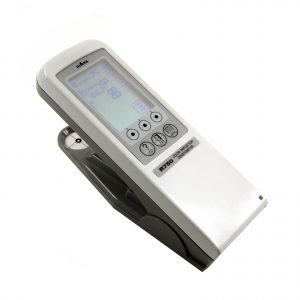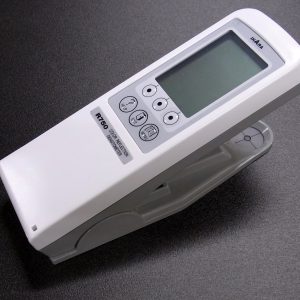T5 Plus Black & White Transmission Densitometer
Categories
T5 Plus Black & White Transmission Densitometer
High Performance with Versatile Measurement Functions
The T5 Plus is a high performance black & white transmission densitometer. It measures density, dot%, and transmittance% (opacity) in film, glass, plastic, coating, and resin, etc. Moreover, the built-in light table allows for accurate positioning. This instrument measures up 6.0D density, and has the ability to “match” readings from other instrument manufacturers.
The standard model measures up to 3.0mm thickness. Please contact us should your application requires a greater thickness.
Simplicity with Intuitive Interface
The T5 Plus has a simple operating user interface that requires little or no prior experience. The user simply scrolls to the measurement desired, and follows the self-guided prompt.
Accessories include:
- Operation Manual
- Calibration Standard
- Accuracy Film
- Measurement Apertures (3.0mm installed, 2.0mm, and 1.0mm)
- AC Adapter
- Serial Communication Software & Cable, Windows OS Only (Optional)
- Heavy Duty IP-65 Rated Protective Carrying Case (Optional)
Warranty: 24-month Limited Warranty
Documentation
| Brochure | |
Why use a transmission densitometer?
A transmission densitometer is a device used to measure the optical density of materials, including x-ray film, photographic film, glass, and other translucent or transparent materials. By measuring the optical density, one can assess various properties and characteristics of these materials. Here are some benefits of using a transmission densitometer on different materials:
- X-ray Film Quality Control: In medical and industrial radiography, x-ray film is used to capture images of internal structures. Using a densitometer allows technicians and radiologists to ensure the quality and consistency of the film, detecting any defects, variations, or artifacts that may affect the accuracy of the radiographic images.
- Photographic Film Analysis: In traditional photography and film production, a densitometer helps photographers and filmmakers to assess the quality of their images. By measuring the density of different areas on the film, they can optimize exposure settings, assess film development, and ensure consistent results.
- Film Processing and Development: For both x-ray and photographic films, a densitometer can be used to monitor and control the film processing and development process. It ensures that the film is processed correctly, leading to consistent and reproducible results.
- Glass Quality Evaluation: Densitometers are also used to evaluate the optical quality of glass materials. In industries such as optics and glass manufacturing, measuring the transmission density of glass can help assess its clarity, homogeneity, and light transmission properties.
- Quality Control in Printing: Densitometers are used in the printing industry to calibrate film output for color consistency. They aid in achieving accurate dot reproduction and ensure that the printing process is within specified standards.
- Research and Development: In scientific research and material analysis, a densitometer can be used to study the optical properties of various materials. Researchers can examine how different materials interact with light, which is essential in fields like material science and chemistry.
- Calibration and Standardization: Densitometers are crucial for calibrating and standardizing imaging equipment, such as medical x-ray machines and photographic cameras. By using standardized density measurements, comparisons and evaluations can be made across different devices and settings.
Overall, the benefits of using a transmission densitometer include improving product quality, optimizing processes, ensuring consistency, and facilitating research and development in various industries that rely on the optical properties of materials.
Product Specifications
- Measurement Functions
- Density, Positive Dot Area %, Negative Dot Area %, Transmittance
- Optical Design
- ANSI PH2.19 (Specular-Diffuse)
- Filter Response
- Visual
- Repeatability
- ±0.01D (at < 4.0D, 3mm aperture)
- Warranty
- 24-Month Limited Warranty
- Measuring Range
- Density: 0.00D – 6.00D
- Dot Area: 0% – 100%
- Transmittance 100% ~ 0.0001%
- Inter-Instrument Agreement
- ±0.02D (at < 4.0D, 3mm aperture)
- Light Source
- Halogen Lamp, Approx. 2856°K
- Aperture Diameter
- 3.0mm, 2.0mm, 1.0mm
- Detector
- Filter, Built-In Photo Diode
- Display
- 8 Character LCD
- Power Supply
- AC Adapter 9V-500mA Built-In Rechargeable Battery 4.8V-800mAh
- Warm Up Time
- None
- Calibration
- One touch zeroing operation. Slope calibration using calibration film.
- Fringe Correction
- Supported
- Operational Key
- Interlocking arm measuring switch, 2 operational panel keys
- Operating Temp. Range
- 41°F ~ 104°F (5°C ~ 40°C)
- Sound Control
- Supported
- Auto Power Off Timer
- Supported
- Dimensions
- Console: 9.9″ (L) x 4.1″ (W) x 4.9″ (H) (251mm x 103mm x 125mm)
- Light Table: 3.1″ x 2.8″ (80mm x 70mm)
- Measuring Arm Length: 7.3″ (185mm)
- Interface
- RS-232C Serial Interface for printer (9,600bps, 8 data bits, No Parity, 1 Stop bit)
- Weight
- Approximately 1,200g (including battery)
Documentation
| Brochure |

